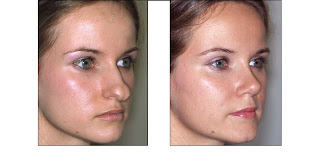PRP for Hair Loss- Hair Problems and Treatment
What is PRP therapy?
PRP (Platelet Rich Plasma) therapy for hair loss is a three-step medical treatment in which a person's blood is drawn, processed, and injected into the scalp.
Some people in the medical community believe that PRP injection will trigger natural hair growth and maintain the natural growth of hair by increasing the blood supply to the hair follicles and increasing the thickness of the hair shaft Sometimes this method is combined with other hair loss procedures or medications.
There have not been enough studies to prove whether PRP can effectively treat hair loss. However, PRP therapy has been used since the 1980s. It is used to repair injured tendons, ligaments and muscles.
PRP treatment is a three-step process, it is also used for scalp hair transplant. Most PRP therapies require three treatments 4-6 weeks apart.
Maintenance treatment is required every 4-6 months.
step 1
The blood is usually drawn from the arm and placed in a centrifuge (a machine that spins quickly to separate fluids of different densities).
Step 2
After about 10 minutes in the centrifuge, your blood will be divided into three layers:
Platelet-poor plasma
Platelet Rich Plasma
Red blood cell
third step
The platelet-rich plasma is drawn into the syringe and injected into the area of the scalp that needs to increase hair growth.
There has not been enough research to prove whether PRP is effective. It is not clear for whom-and under what circumstances-it is most effective.
According to a recent research report, "Although PRP has sufficient theoretical and scientific basis to support its use in hair repair, the use of PRP for hair repair is still in its infancy. Clinical evidence is still weak."
PRP hair loss side effects
Since PRP therapy requires your own blood to be injected into your scalp, you are not at risk of infectious diseases.
Nevertheless, any therapy involving injections will always bring side effects, such as:
- Damage blood vessels or nerves
- infection
- Calcification at the injection point
- Scar tissue
You may also have adverse reactions to the anesthetics used in the treatment. If you decide to use PRP to treat hair loss, please inform your doctor in advance of your tolerance to anesthetics.
The risk of PRP hair loss
Before proceeding with this procedure, be sure to report all medications you are using, including supplements and herbs.
When you have an initial consultation, many providers will advise you not to use PRP for hair loss if you meet the following conditions:
- are on blood thinner
- are a heavy smokers
- have a history of alcohol or drug misuse
You might also be rejected for treatment if you’ve been diagnosed with:
- acute or chronic infections
- cancer
- chronic liver disease
- chronic skin disease
- hemodynamic instability
- hypofibrinogenemia
- metabolic disorder
- platelet dysfunction syndromes
- systemic disorder
- sepsis
- low platelet count
- thyroid disease






Comments
Post a Comment